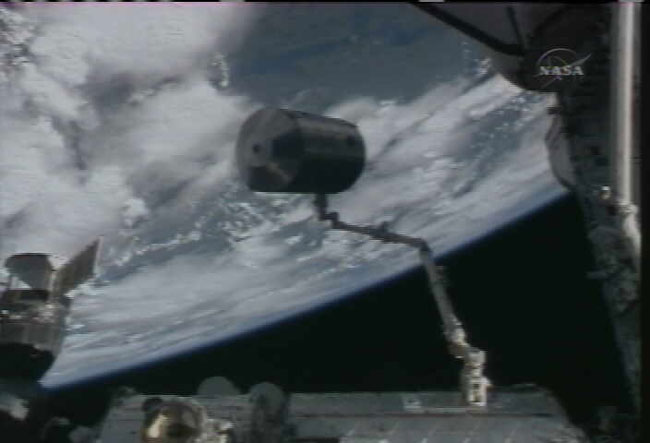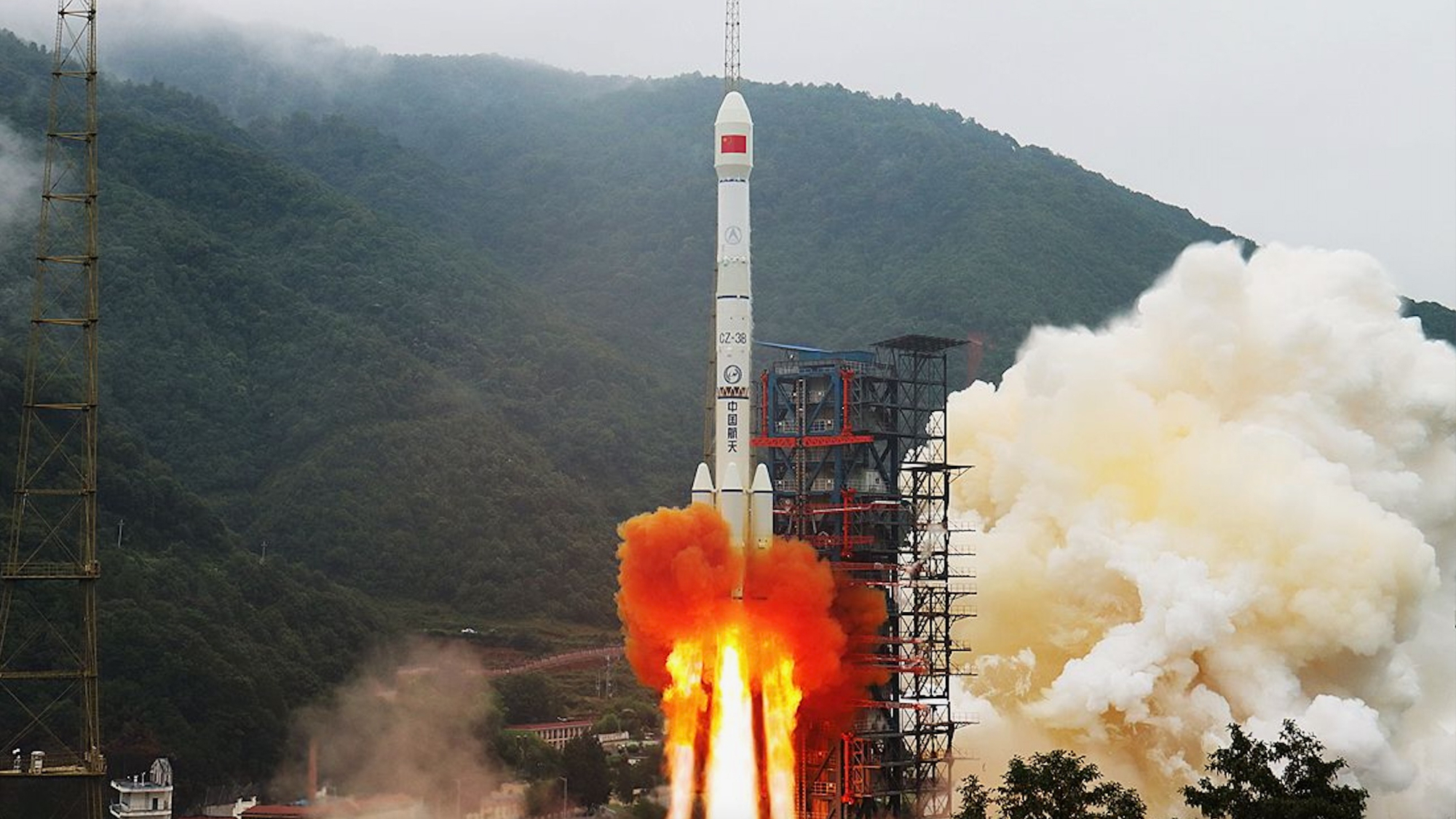Shuttle Astronauts Prepare to Leave Space Station

HOUSTON - Six astronauts are spending theirfinal day at the International Space Station (ISS) as NASA's shuttle Discoveryis primed for a Saturday undocking.
Discovery's STS-121 astronautsretrieved their Italian-built Leonardocargo module from its berth at the space station's Unity node and tucked itaway in the shuttle's cargo bay for the return flight to Earth.
"They're still working hard andstill talking to each other," said Tony Ceccaci, leadshuttle flight director for Discovery's STS-121 mission, who spoke one-on-onewith the flight's commander, StevenLindsey, earlier today. "He said everybody's doing great and they're readyto do late inspection."
Later today, the crew will check formicrometeoriteimpacts to Discovery's port - or left - wing leading edge using theshuttle's sensor-laden inspection boom. The crew will undock from the ISS at 6:08 a.m. EDT (1008GMT) on Saturday and inspect the orbiter's starboard wing edge and nose cap.
The shuttle's primary reactioncontrol thrusters, rather than its smaller vernierengines used for fine maneuvers, will be used to back away from the ISSSaturday, NASA officials said. The change will mean that Discovery's motionswill be larger, and rather crude according to some astronauts, but should notbe a challenge for Lindsey and STS-121 pilot MarkKelly.
"The crew is trained to do that,they understand what they're looking for, so there's no concerns onthat," Ceccacci said. "Basically, you don't have asfine control as you would on verniers."
Discovery is set to land at NASA's Kennedy Space Center in Florida at 9:07 a.m. EDT (13067 GMT) after a 13-day missionthat began with a July 4 launch.
Breaking space news, the latest updates on rocket launches, skywatching events and more!
The spaceflight is NASA's secondorbiter test mission since the 2003Columbia accident. Discovery's crew delivered about 7,400 pounds (3,356kilograms) of supplies, hardware, tools and other equipment to the ISS alongwith a new crewmember - European Space Agency (ESA) astronaut ThomasReiter - and completed several ISS repairs and several tests of shuttleheat shield repair tools and methods.
Engineers study APU issues
While Discovery's shuttle crewprepares for undocking, a team of engineers continues to pore over issueswith two of the shuttle's three Auxiliary Power Units (APUs),Ceccacci said.
Thermostat failures have lead twoheaters on APU 3 to fail in the "On" mode, which - though unexpected - is not thoughtto be a major problem.
The other problem concerns apossible leak in APU 1, either with its nitrogen supply or toxic hydrazinefuel, Ceccacci said. A nitrogen leak is ratherbenign, but a hydrazine leak could lead to a fire akin to that seen duringSTS-9 in 1983, though engineers are studying the issue and will updateDiscovery's Mission Management Team (MMT) later today, he added.
According to a mission summary uplinked to Discovery's crew this morning, the threat of ahydrazine fire appears to be low.
"In fact, at this leak rate, thehydrazine vapor concentrations will remain well below the flammability limitsin the aft compartment for reentry," the crew's Flight Day 11 execute packagereported, adding that engineers are still unsure if it is hydrazine or nitrogenleaking from APU 1. "The teams continue to work around the clock on the groundto quantify the effects of the small N2 of fuel leak and the forward plan forreentry."
ISS set for new construction
With Discovery's Leonardo cargo podback inside its payload bay berth, the ISS is now set for futureconstruction flights to expand its living area and crew size.
"After 121's successful completionhere we can continue with assembly ops," said Rick LaBrode,NASA's lead ISS flight director for STS-121. "And if we weren't successful, weweren't going to be able to do that."
During Discovery's flight, STS-121spacewalkers PiersSellers and Michael Fossum restored the station's railcar-like MobileTransporter - vital for ISS construction - to full operation by repairinga redundant power and data cable system.
Among the notable ISS deliveries forDiscovery's crew, Reiter's arrival stands out, followed by a new Minus EightyLaboratory Freezer for ISS (MELFI) to store biological samples, a EuropeanModular Cultivation System (EMCS) for plant growth studies, and a rebuiltexercise cycle - dubbed Cycle Ergonometer withVibration Isolation and Stabilization (CEVIS).
"On this particular flight, we'vetransferred more payload cargo than any other shuttle flight," LaBrode said.
The station now has 15 water bags,redundant air conditioners, a U.S. Oxygen Generating System, six new laptopcomputers, a fresh printer and new lights scavenged from inside Leonardo, headded.
Discovery is also hauling about4,600 pounds (2,860 kilograms) - 300 pounds (136 kilograms) more than expected- of unneeded cargo back to Earth aboard Leonardo, with an additional 1,800pounds (816 kilograms) worth to be tucked in its middecklockers.
"It looks very close, we're right inthe ballpark," LaBrode said.
NASA will broadcast Discovery'sSaturday undocking live on NASATV beginning with a crew farewell ceremony at 3:38 a.m. EDT (0738 GMT). You are invited to watch the activity via SPACE.com's NASA TV feed, which is availableby clicking here.
- Gallery: Shuttle's First Flight
- Gallery: Rare Space Shuttle Images
- Shuttle Discovery: Complete Mission Coverage
- Great Space Quizzes: Space Shuttle Countdown
- Great Space Quizzes: The Space Shuttle
- Great Space Quizzes: Life in Orbit
Join our Space Forums to keep talking space on the latest missions, night sky and more! And if you have a news tip, correction or comment, let us know at: community@space.com.

Tariq is the Editor-in-Chief of Space.com and joined the team in 2001, first as an intern and staff writer, and later as an editor. He covers human spaceflight, exploration and space science, as well as skywatching and entertainment. He became Space.com's Managing Editor in 2009 and Editor-in-Chief in 2019. Before joining Space.com, Tariq was a staff reporter for The Los Angeles Times covering education and city beats in La Habra, Fullerton and Huntington Beach. In October 2022, Tariq received the Harry Kolcum Award for excellence in space reporting from the National Space Club Florida Committee. He is also an Eagle Scout (yes, he has the Space Exploration merit badge) and went to Space Camp four times as a kid and a fifth time as an adult. He has journalism degrees from the University of Southern California and New York University. You can find Tariq at Space.com and as the co-host to the This Week In Space podcast with space historian Rod Pyle on the TWiT network. To see his latest project, you can follow Tariq on Twitter @tariqjmalik.
